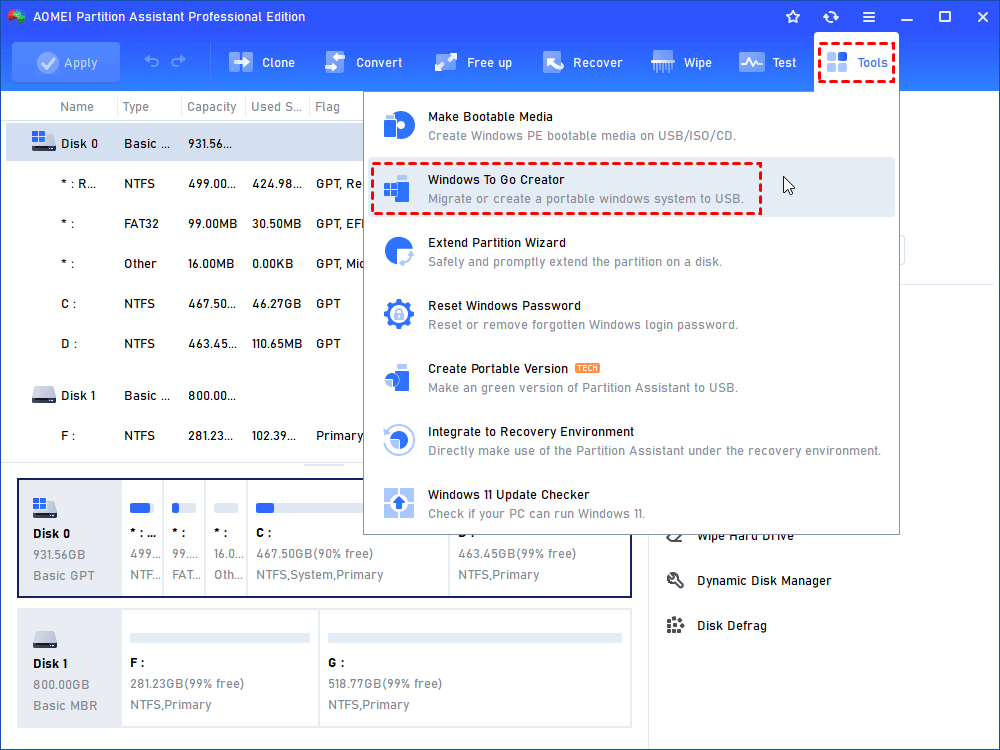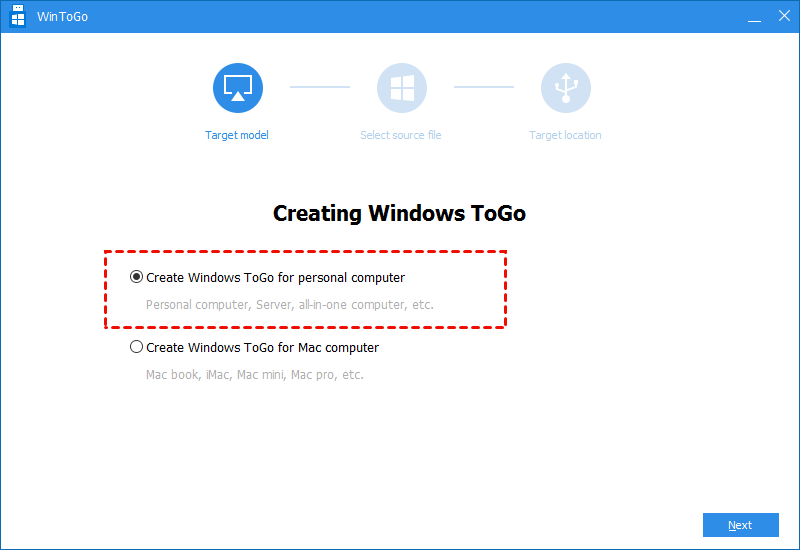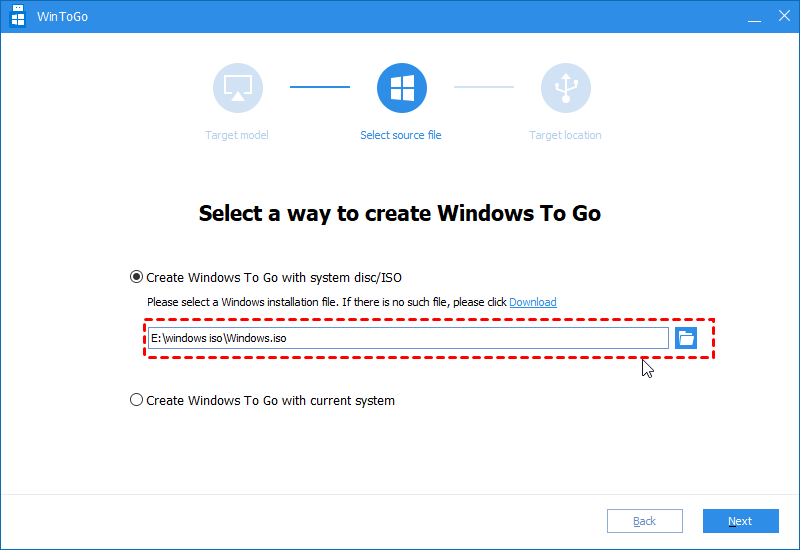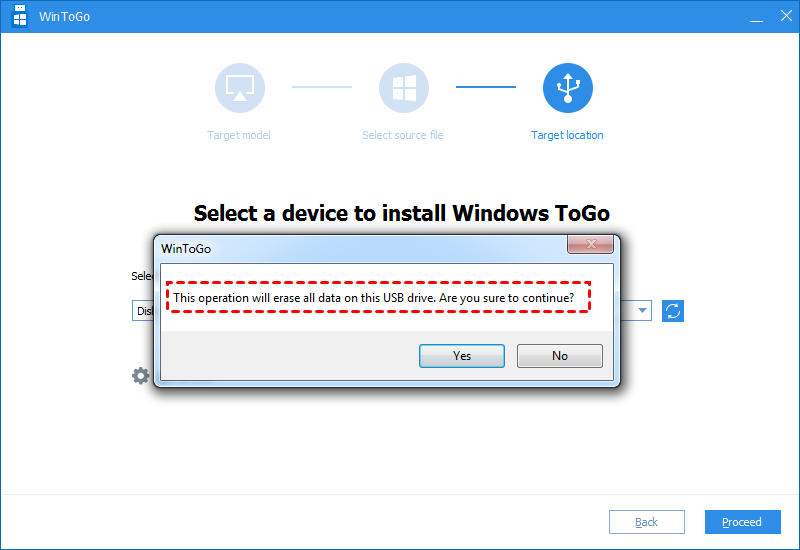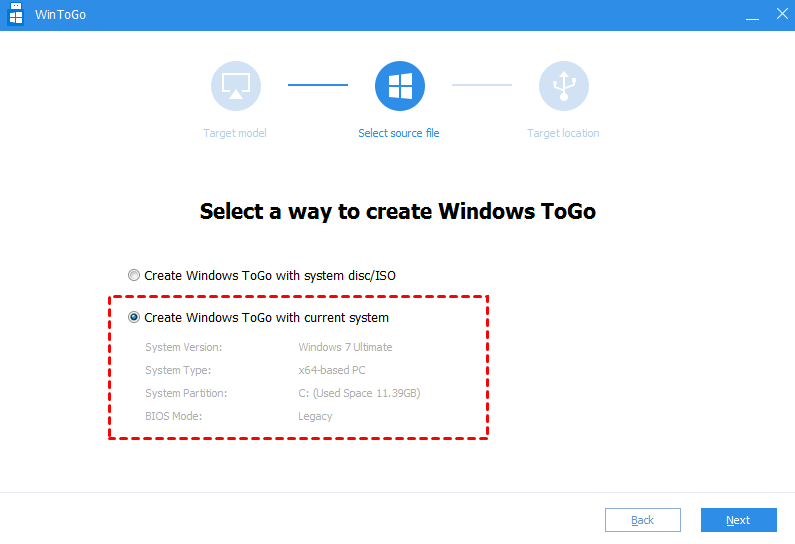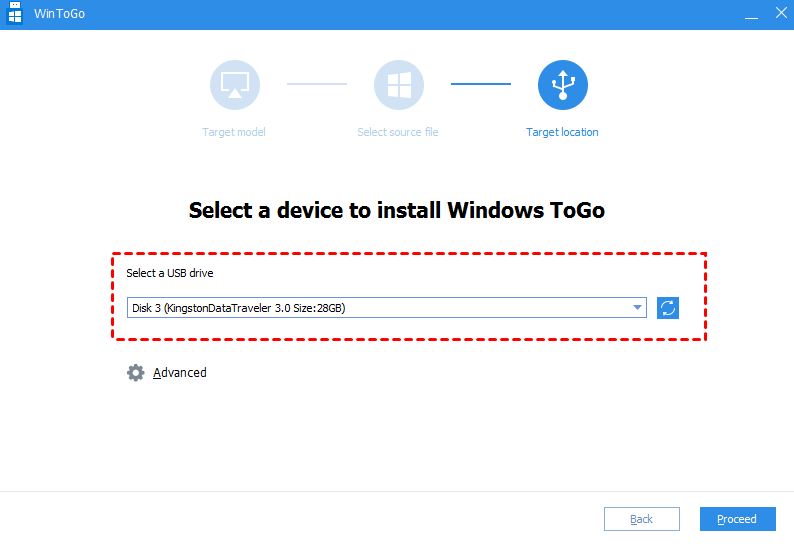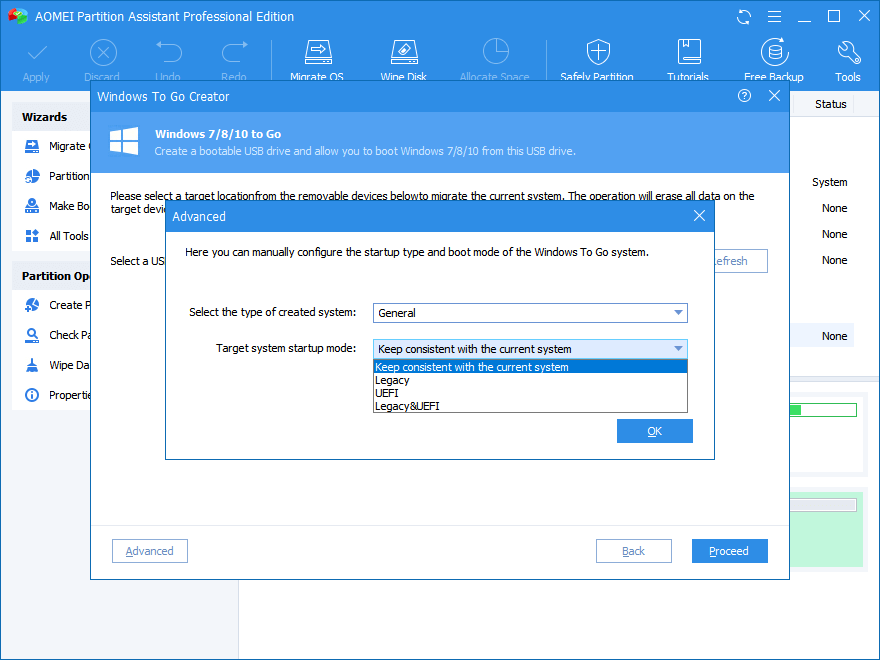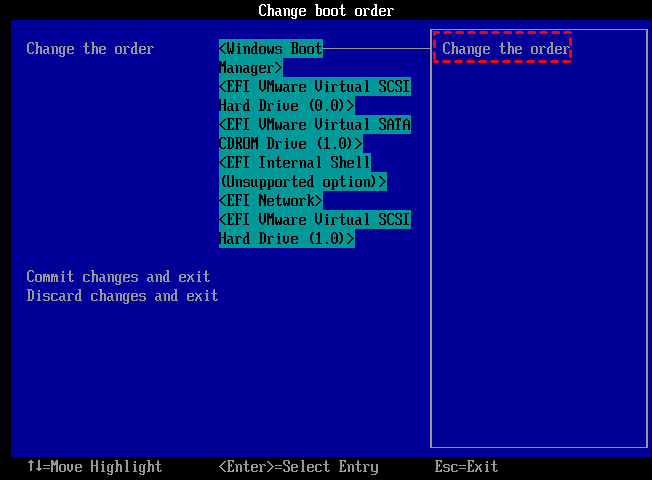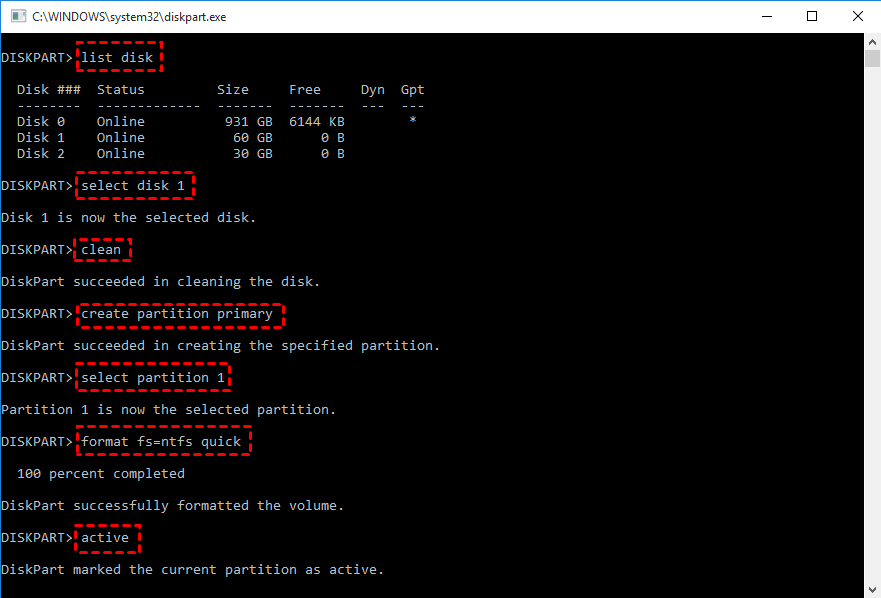- How to Install Windows 10, 8, 7 to USB as Portable OS Device?
- Can Windows be installed on a USB drive?
- How to install Windows 10/8/7 onto USB?
- в—Џ Install Windows to USB with ISO file
- в—Џ Install Windows to USB with the current system
- How to Boot a PC from the portable Windows USB
- Further reading: how to install Windows with USB drive?
- Conclusion
- Install Windows from a USB Flash Drive
- What you need
- Step 1 — Format the drive and set the primary partition as active
- Step 2 — Copy Windows Setup to the USB flash drive
- Step 3 — Install Windows to the new PC
- If your Windows image is larger than 4GB
- How to Install Windows 7 and 8 using a USB Flash Drive
How to Install Windows 10, 8, 7 to USB as Portable OS Device?
Installing Windows to USB drive allows you to directly run OS on other computers with this portable bootable USB flash drive.
By Dylan 
Can Windows be installed on a USB drive?
«I can use a USB flash to install Windows on my computer from ISO. But I’m often on a business trip, so I’m wondering if I can install Windows 10 to a USB, and wherever I go, I can directly run my customized operating system from the USB drive.»
— Question from Microsoft.com
When you work from home or on a business trip, you may want to run a different Windows system like Windows 10, 8, 7 from a bootable Windows USB. Actually, it is not a difficult operation. And in this post, we are going to give you a tutorial of making a portable system by installing Windows to USB drive.
Content table:
How to install Windows 10/8/7 onto USB?
To install Windows to a USB, you can use a feature called “Windows To Go Creator”, which is provided by AOMEI Partition Assistant Professional . It allows you to deploy a Windows environment on a USB drive so that you can use your own system wherever you go on any other PC.
Besides, This tool can create Windows USB with either ISO files or the current system. And it also supports creating a Windows OS bootable USB on Mac. And you can download the demo version to see how it works.
Before the operation, you need to know (and you need to do):
An ISO file/disc: You can insert an installation Disc, or download ISO file from Microsoft website. Also, you can install the current system to USB,
A 2.0/3.0 USB flash drive: Taking running speed into consideration, we recommend 3.0 USB drive, which can take much less time than 2.0 USB and port.
Backup the files on USB : The USB drive will be formatted before it is created to be a “Windows To Go” device.
в—Џ Install Windows to USB with ISO file
Step 1. Install and open AOMEI Partition Assistant. In the main interface, click “All Tools” and select “Windows To Go Creator”.
Step 2. In this window, choose “Create Window To Go for personal computer” and click “Next”.
вњЌNote : If you are using a Mac computer, you can choose the second option to run windows from USB on Mac.
Step 3. Then select “Create Windows ToGo with system disc/ISO” and choose the ISO file, and click “Next”.
Step 4. Then the USB drive will be detected automatically by the program, if it doesn’t, you can click fresh, and click “Browse” to choose the ISO file. And click “Proceed”.
Step 5. It will pop up a small window to tell you the files on the USB drive will be erased. Please back up the USB beforehand.
в—Џ Install Windows to USB with the current system
Step 1 and step 2 are the same, just open “Windows To Go Creator” in the main interface, and select Creating Windows To Go with PC.
Step 3. Choose “Create Windows To Go with the current system, and you will see the elaborate information of current OS on the computer, and click “Next”.
Step 4. Then the program will detect your USB drive. Reinsert it if it can’t be detected. Besides, you can click “Advanced” to decide the type of the created system and startup mode. Then click “Proceed”.
When the operation gets finished, Windows will be stalled on the USB. And you can insert it boot other computers.
How to Boot a PC from the portable Windows USB
Now, you can connect the USB to any other PC, and enter BIOS setup to set it as the boot drive. Then follow the steps below.
Step 1. With the USB inserted, turn on the computer.
Step 2. When the initial startup screen appears, tap the BIOS key (F2, F3, F4, F7, F8, it depends on the manufacturer that created the BIOS).
Step 3. And the BIOS setup will be launched. And use the arrow keys to choose «Boot» tab.
Step 4. And choose «Change boot order», and move the USB to the first one on the boot sequence.
Step 5. Save the change and exit, and the PC will be started from the USB.
Further reading: how to install Windows with USB drive?
If you want to create a Windows creation tool (create a bootable USB for installation) you can refer to the following content and learn how to install Windows to your computer through USB drive.
Step 1. Insert a USB drive to your computer and download Windows ISO file.
Step 2. Click “Search” icon on the left bottom, type “cmd” in the search box and hit Enter to open the Command Prompt.
Step 3. Type “diskpart” and press Enter on Command Prompt to open Disk part tool.
в—Џ list disk
в—Џ select disk n (n is the drive letter of your USB)
в—Џ clean
в—Џ create partition primary
в—Џ select partition 1
в—Џ format fs=ntfs quick.
в—Џ active
After executing these commands, your USB is bootable for installation, and you need to burn the ISO file to USB drive.
Step 4. And leave the Disk part tool, and open Command Prompt, then execute the commands as follow:
● xcopy A:\*.* B: /s/e/f”(A is the ISO image drive, and E: is the USB drive letter).
● A:\Boot\Bootsect /NT60 B: /force /mbr”.
The two commands will copy ISO files to USB drive and write a bootloader to your USB. After that, you can use this USB to boot up your PC and install Windows.
✍Attention : This way cannot directly run your own system on a computer. If you need, please use the “Windows To Go Creator” of AOMEI Partition Assistant Professional.
Conclusion
This is all about how to install Windows to USB. This tutorial can be applied to different Windows systems including Windows 10/8/7, Windows XP, and Vista. Besides, the versatile software-AOMEI Partition Assistant provides other functions, like migrating OS to HDD or SSD , extending system disk. And if you meet some boot issues, you can use it to create a bootable USB to repair your computer.
In addition, if your computer is running with Windows Server system, you can turn to AOMEI Partition Assistant Server Edition .
Install Windows from a USB Flash Drive
Here’s how to create a bootable Windows installation USB drive starting with a Windows .iso file or a Windows Setup DVD.
If you’re looking for an easy way to create a bootable USB Windows installation drive, use the media creation tool.
What you need
- Windows 10 install .iso or DVD
- USB flash drive with at least 5GB free space. This drive will be formatted, so make sure it doesn’t have any important files on it.
- Technician PC — Windows PC that you’ll use to format the USB flash drive
- Destination PC — A PC that you’ll install Windows on
Step 1 — Format the drive and set the primary partition as active
Connect the USB flash drive to your technician PC.
Open Disk Management: Right-click on Start and choose Disk Management.
Format the partition: Right-click the USB drive partition and choose Format. Select the FAT32 file system to be able to boot either BIOS-based or UEFI-based PCs.
Set the partition as active: Right-click the USB drive partition and click Mark Partition as Active.
If Mark Partition as Active isn’t available, you can instead use diskpart to select the partition and mark it active.
Step 2 — Copy Windows Setup to the USB flash drive
Use File Explorer to copy and paste the entire contents of the Windows product DVD or ISO to the USB flash drive.
Optional: add an unattend file to automate the installation process. For more information, see Automate Windows Setup.
Step 3 — Install Windows to the new PC
Connect the USB flash drive to a new PC.
Turn on the PC and press the key that opens the boot-device selection menu for the computer, such as the Esc/F10/F12 keys. Select the option that boots the PC from the USB flash drive.
Windows Setup starts. Follow the instructions to install Windows.
Remove the USB flash drive.
If your Windows image is larger than 4GB
Windows USB install drives are formatted as FAT32, which has a 4GB filesize limit. If your image is larger than the filesize limit:
Copy everything except the Windows image file (sources\install.wim) to the USB drive (either drag and drop, or use this command, where D: is the mounted ISO and E: is the USB flash drive.)
Split the Windows image file into smaller files, and put the smaller files onto the USB drive:
How to Install Windows 7 and 8 using a USB Flash Drive
Physical DVD drives are becoming a thing of the past as the size of our PCs continue shrink and new form factors are emerging. Microsoft distributes Windows 7 and Windows 8 on physical discs or images of DVDs called ISO files that are typically burned to physical media. This has become problem as a number of laptops and tablet PCs no longer ship with DVD drives. The best way to install Windows on these devices is to use a USB flash drive that contains the Windows installation files. As an extra benefit, modern USB flash drives are typically much faster than DVDs resulting in a quick install.
Before we get started you will need:
- Windows 7 or Windows 8 ISO file and WinRAR or a burned DVD with the install source files
- 4 GB USB flash drive for Windows 7. You may need a 8 GB USB flash drive for some Windows 8 images.
Option 1 — The Manual Method
1. Preparing the USB flash drive
Let’s get started. First we need to format the USB flash drive to erase any existing data on the drive. Click on the Start Button and then Computer to bring up your drives.
Next, right click on the removable USB flash drive and select Format.
Click Start and the USB flash drive will be formatted.
2. Preparing the source files
Now it is time to extract the setup from a Windows 7/8 ISO image file. If you have a physical Windows install DVD then skip to step 3.
To extract the files from the ISO file you will need WinRAR. If you do not already have WinRAR download and install that now.
Once you have WinRAR installed navigate to the ISO file in explorer and right click on the file and select the bottom Extract to option.
The ISO file will now be extracted to a sub-folder with the same name as the ISO file. This can take a few minutes to complete.
3. Copying source files to USB flash drive
The final step is to copy the install source onto the USB flash drive in a way that will allow the Windows 7/8 install to boot up. The trick here is to use XCopy. Depending on where your source files are located there are two different methods to copy the files onto the flash drive.
Using extracted source files
Open up command prompt and navigate to the directory you extracted the source files from the ISO file with the CD command. Then, run XCOPY *.* J: /e and hit Enter to start the copy. Be sure to replace J with the drive letter of your USB flash drive.
Using a physical Windows install DVD
The instructions are slightly different when using a physical DVD. Open up command prompt and type XCOPY D: J: /e and hit Enter. Replace D with the drive letter of your CD-ROM drive and replace J with the drive letter of your USB flash drive.
5. Installing Windows 7/8 from the USB flash drive
Once the file copy has completed you are ready to plug the USB flash drive into your computer. Turn it on and hit the keyboard shortcut to bring up the boot menu for your model. Typically it is F12 or F1. After you select your USB flash drive the Windows 7/8 installation should begin to load. At this point, installing Windows is the same as on a normal laptop or a desktop.
Option 2 — Automatic Method
Microsoft now has a free utility that will automatically make a bootable USB flash drive from a Windows 7/8 ISO image file. Simply download the tool, specify the location of your ISO file and the wizard will do everything for you.

